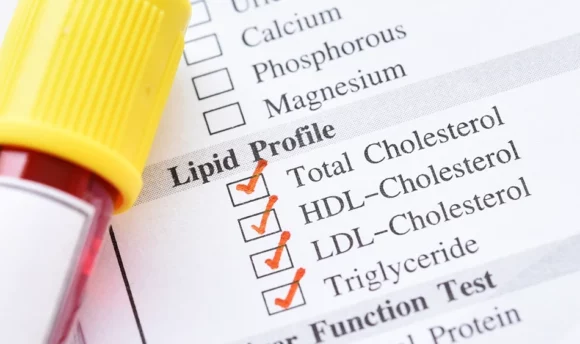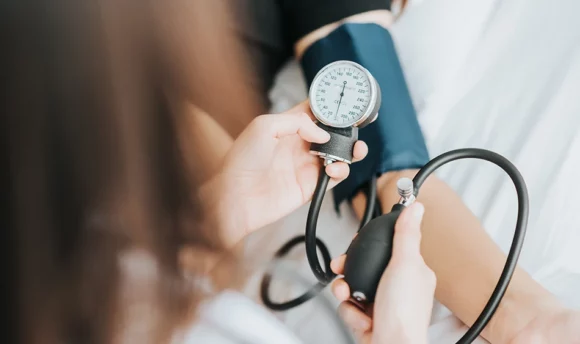Are Wrist Blood Pressure Monitors Accurate?
Taking your own blood pressure measurements may be required if you have hypotension or hypertension. Many people choose wrist blood pressure monitors to help them take readings, but are they accurate? Find out more in this article.

Whether you’re just checking it occasionally or need to keep track of your blood pressure daily, at-home wrist blood pressure monitors are a great way to do this. They’re convenient, compact, and light.
However, wrist blood pressure monitors are not thought to be the most accurate way of measuring your blood pressure at home. There are some concerns that the anatomy of the wrist arteries may make the readings less accurate.
Upper arm cuffs and finger blood pressure monitors are considered more accurate methods of measuring your blood pressure; however, they may not be as easy to use when taking your own measurements at home.
In this article, we’re going to take a look at wrist blood pressure monitors, how they work, and how to take your blood pressure accurately at home. We’ll also answer the question: are wrist blood pressure monitors accurate? Read on to learn more.
What Are Wrist Blood Pressure Monitors?
Wrist blood pressure monitors are devices used at home for measuring blood pressure. They are usually small devices with a large display screen, and some can actually store past readings to help you see any changes in your blood pressure.
The wrist monitor measures two kinds of blood pressure, systolic blood pressure and diastolic blood pressure. You are able to take your own blood pressure readings regularly with this kind of blood pressure monitor.
Are Wrist Blood Pressure Monitors Accurate?
Wrist blood pressure monitors are not considered the most accurate method of measuring blood pressure. They may be used occasionally, but if you need to check your blood pressure regularly, for conditions like high blood pressure, other, more accurate methods should be used, like upper arm cuffs.
If you’re worried about your blood pressure monitor efficacy, you could speak with a medical professional to find the best option for your condition. Taking blood pressure readings regularly usually means your condition needs to be monitored, so you want the most accurate results.
Upper arm cuffs may be a better choice for you; however, they can be difficult to maneuver when trying to take your own readings.
There are a few reasons that wrist blood pressure monitors are less accurate than their upper arm counterparts. We’ve summarized why below.
Why are wrist blood pressure monitors less accurate?
There are two main reasons why wrist blood pressure monitors are considered less accurate. These are the anatomy of the wrist and user error. The anatomy of the wrist is less than desirable for taking blood pressure compared with the upper arm.
In the wrist, vessels are thinner and closer to the surface of the skin. This can make it more difficult to get an accurate reading. The blood vessels in the arm are much more suited to getting a proper blood pressure reading due to being deeper in the skin, which is why upper arm cuffs are favored over wrist monitors.
User error is common with much at-home self-checking equipment, but it is particularly difficult when it comes to wrist blood pressure monitors. It is more difficult to get a wrist monitor in the right position to get an accurate reading, and so errors tend to occur. Other at-home monitors may be easier to place correctly.
When measuring at home, it is advised you take a few blood pressure readings and then take the average of these readings. You should also be aware that at-home wrist blood pressure monitors tend to skew slightly higher than your actual blood pressure.
How Do I Know if My Blood Pressure Monitor Is Accurate?
You can check if your wrist blood pressure monitor gives accurate readings by comparing it to the readings your doctor takes. This is the best way to see if your monitor is giving you slightly higher or slightly lower results and can help you better understand the readings that you get.
You can also ensure you get a good wrist monitor by speaking with a doctor before you purchase to choose the best blood pressure monitors. Look out for clinically validated monitors.
How to Check Your Blood Pressure at Home
Checking your blood pressure at home can be difficult at first. You want to get accurate blood pressure readings, so you’ll need to follow a few steps to ensure you do. These steps are listed below.
- To begin with, it is essential you understand your wrist blood pressure monitor, so you need to follow the instructions as thoroughly as possible. If you still aren’t sure how it works, speak with a medical professional to help you understand your wrist monitor.
- Before taking your blood pressure readings, ensure that you avoid cigarettes, caffeinated beverages, or vigorous activity for at least half an hour before. All of these things can have an effect on your blood pressure which means that to get the most accurate reading, you should avoid them.
- Take your reading every day at the same time. Whether you’re using an upper arm cuff to take your blood pressure or a wrist monitor, it is essential you take your readings at the same time every day and on the same arm.
- Before taking your blood pressure readings, you also need to empty your bladder. So, take a trip to the toilet before you sit down to take your measurements.
- Lastly, in preparation for taking your blood pressure reading, you need to remain stationary for a few minutes beforehand. This is to give your blood pressure the chance to return to its normal state before you take the reading.
- You should also ensure your upper arm or wrist is easily accessible. You cannot take your blood pressure reading over clothes as it will not be accurate.
- Sit up straight and feet planted on the floor. Do not cross your legs, as this, too, can affect the blood pressure readings you get.
- Rest your arm on a surface that is flat and sturdy, like a desk or a table, and place the wrist or upper arm cuff in the correct position.
- Record 2–3 blood pressure readings and take an average to get the most accurate data possible.
- If you struggle to do this all yourself, get someone to help you note down the readings.
It is important to note that in some settings, your blood pressure may be raised due to stress. This phenomenon is commonly known as “white coat” syndrome and usually happens when having your blood pressure measured in a clinic. It can affect your blood pressure readings and should be considered.
FAQs
Generally, the upper arm blood pressure monitors are considered more accurate than the wrist blood pressure monitors. This is because the blood vessels in the wrist are narrower and closer to the surface of the skin, making it difficult to get an accurate blood pressure reading.
Yes. You should only take your blood pressure readings as many times as recommended by your doctor. If you take too many blood pressure readings in a day, you may find yourself becoming anxious or stressed and noticing fluctuations. Small changes are normal in blood pressure, but overthinking it could impact your health.
A wrist blood pressure monitor is not considered the most accurate method of taking blood pressure readings. Instead, upper arm cuffs are recommended because they give a more accurate reading. Wrist blood pressure monitors tend to skew slightly higher. You can check your wrist blood pressure monitor by comparing your results with your doctor’s blood pressure readings.
A Word From Our MD
High blood pressure can be caused by many different things, but it should always be assessed at a doctor’s office. High blood pressure can lead to a number of negative consequences, including putting you at a higher risk of cardiovascular events.
If you have a blood pressure condition, you’re likely to have to take blood pressure measurements at home. You do this with a home blood pressure monitor, like a wrist monitor or an upper arm monitor.
People tend to find the wrist monitors easier to use on themselves as they have a large display screen and are easy to maneuver. However, wrist blood pressure monitors are considered the least accurate of the options.
If you’re using a wrist monitor, you may find that your readings tend to skew slightly higher than when your blood pressure is taken at the doctor’s office using analog blood pressure monitors held on the upper arm.
This is because wrist blood pressure cuffs are easy to use wrongly. The blood vessels in the wrist are also narrower and closer to the skin’s surface, which makes taking blood pressure measurements more difficult and more likely to be slightly off.
You can check your blood pressure measurements are accurate by checking them against those taken at the doctor’s office on your visits, as well as taking a few readings at once to get the average of them.
Ensure you do your research and speak with a doctor about the best options for ways to monitor blood pressure at home.
Conclusion
If you need to measure blood pressure at home, it is likely you have a condition that your doctor is worried about. This means you’re going to need an accurate method of measuring your blood pressure.
Many people choose a wrist monitor for their at-home blood pressure monitor; however, wrist monitors are actually considered less than an accurate method of having your blood pressure measured.
You should opt for more accurate methods such as upper arm cuffs or finger blood pressure monitors.
Make sure to follow the instructions of your blood pressure monitors before taking readings and refrain from exercising or drinking caffeinated beverages beforehand. Compare your results with your doctor, too, to see how accurate your at-home readings are.

















































 Select your language:
Select your language: 








